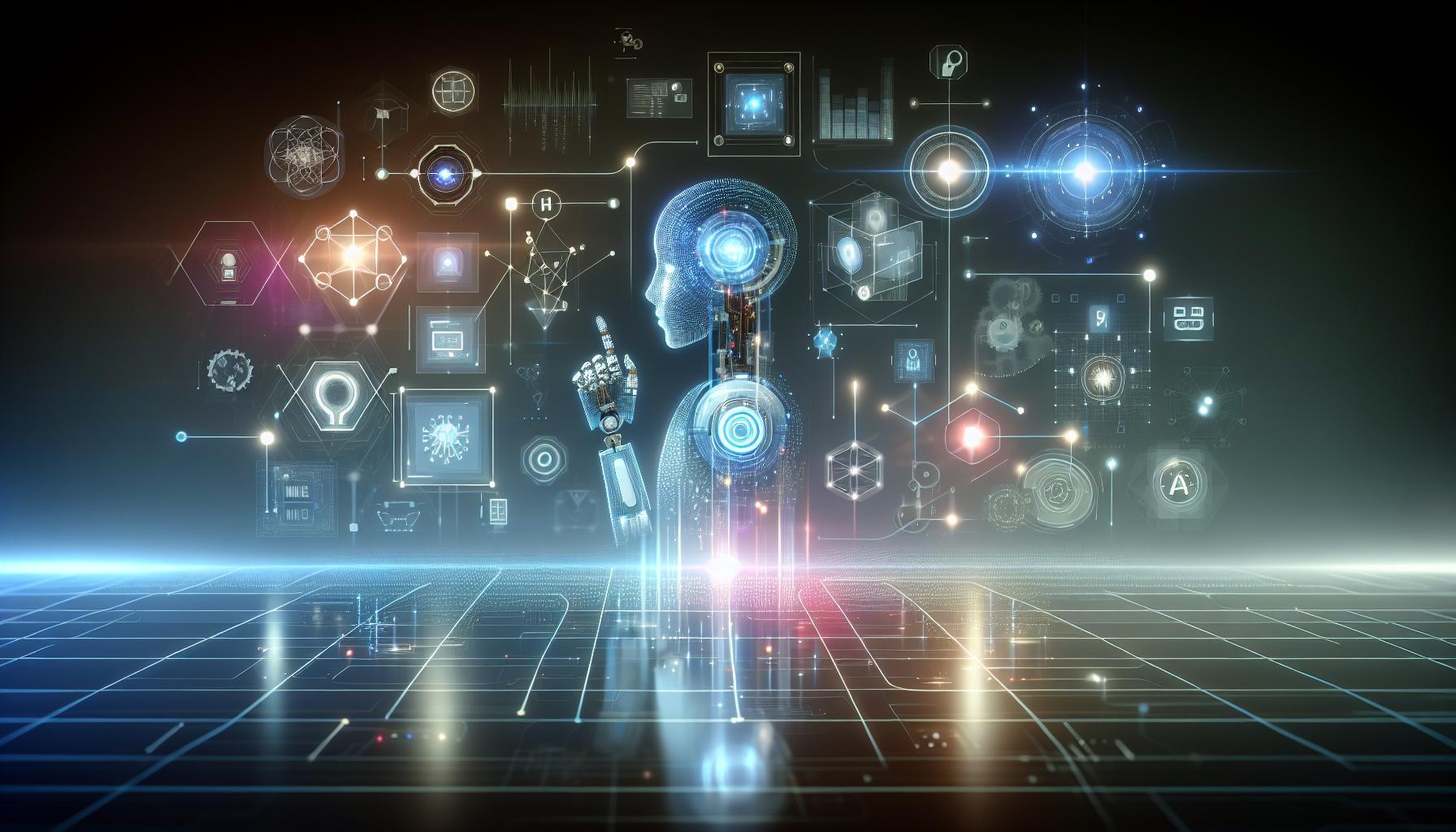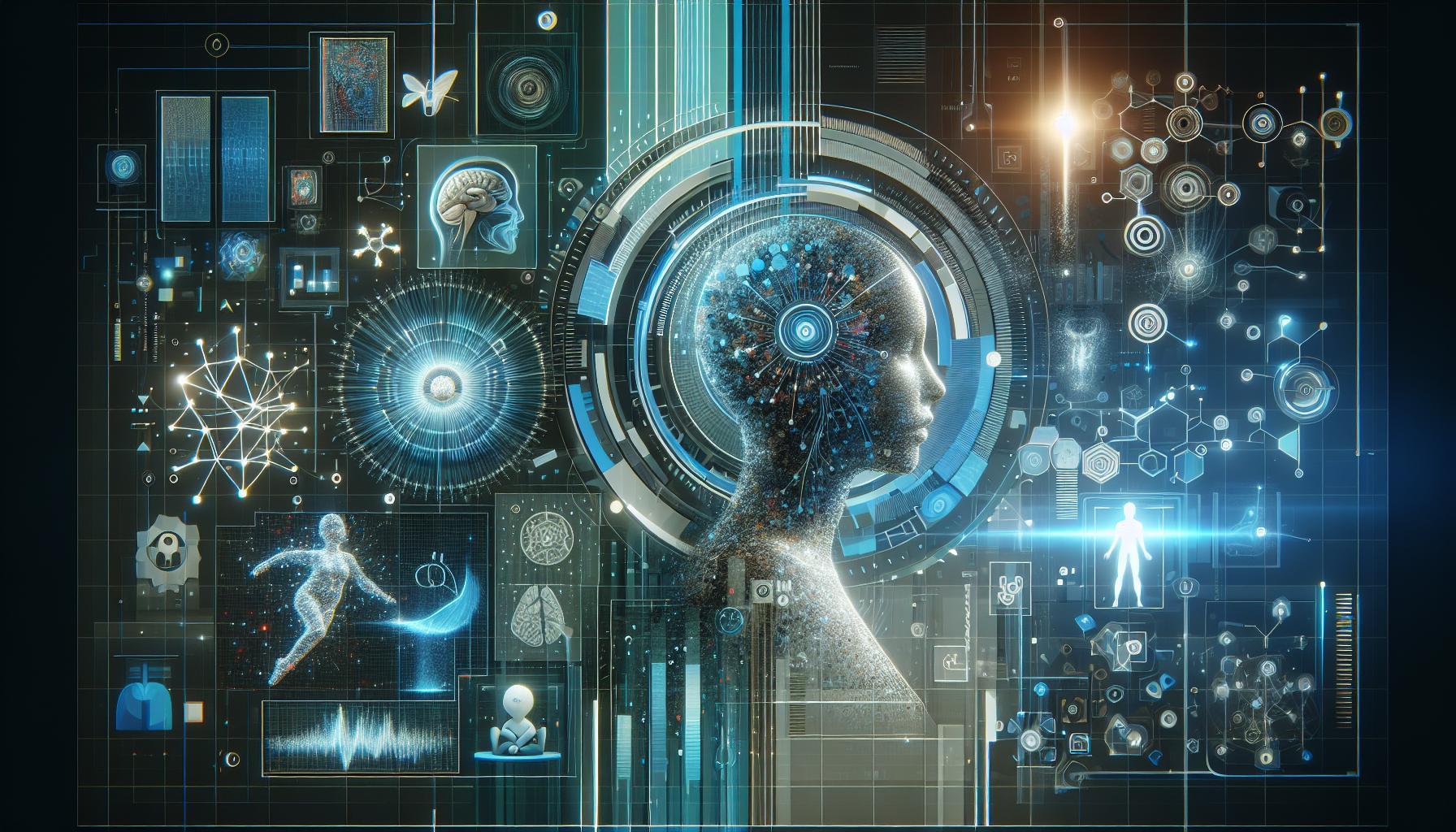As educational institutions increasingly adopt AI tools for assignments, a pressing question emerges: can platforms like Canvas effectively identify responses generated by models such as ChatGPT in multiple-choice assessments? Understanding this capability is crucial for maintaining academic integrity and ensuring that evaluations genuinely reflect students’ knowledge and skills.
Understanding the Mechanics: How Canvas Operates in Academic Settings
In an era where technology and education intertwine, understanding how digital platforms operate in academic settings becomes essential for both educators and students. Learning management systems (LMS) like Canvas have revolutionized how educational content is delivered and assessed, offering tools that help track student performance while ensuring academic integrity. As concerns about the use of AI in crafting responses grow, a critical question arises: Can Canvas detect AI-generated answers, particularly in multiple-choice assessments?
How Canvas Enhances Assessment Integrity
Canvas employs several sophisticated mechanisms that help maintain the integrity of assessments. These systems monitor student activity and engagement, helping educators determine whether the answers provided align with the individual’s learning abilities. Key features include:
- Browser Lockdown: This security feature restricts students from accessing other websites or applications during assessments, limiting the potential use of AI tools like ChatGPT.
- Analytics and Reporting: Canvas provides detailed analytics on student performance, enabling instructors to identify patterns in responses that may suggest reliance on external help.
- Randomized Question Pools: By using various question sets for assessments, Canvas complicates the use of shared answers among students, making it harder for AI-generated responses to appear uniform across submissions.
AI Detection Technologies in Canvas
While Canvas itself may not have built-in features specifically designed to detect AI-generated content, it can integrate with external tools that enhance its capabilities. Some of these tools utilize machine learning algorithms to analyze the patterns and structures of responses. For example, they might look for:
| Detection Method | Description |
|---|---|
| Textual Analysis | Evaluates writing style and coherence, identifying anomalies that indicate AI-generated content. |
| Response Timing | Measures how quickly students complete assessments, with unusually rapid completion raising flags. |
| IP Address Tracking | Monitors where submissions originate, ensuring that assessments are taken in an approved environment. |
By leveraging these technologies, educators can better gauge whether students are utilizing AI inappropriately and take steps to address any issues effectively. This collaborative approach not only enhances educational integrity but also encourages students to engage more authentically with their learning materials.
Through these mechanisms, Canvas empowers educators to facilitate a fair assessment atmosphere while keeping up with emerging technologies like ChatGPT. Understanding these mechanics is vital for all stakeholders in the academic environment, as it fosters an atmosphere of accountability and promotes genuine learning experiences.
The Rise of AI Writing Tools: ChatGPT’s Role in Education

The integration of AI writing tools in education is revolutionizing the way students engage with learning materials and express their understanding. With platforms like ChatGPT, educators are witnessing a shift in how students approach assignments, essays, and even collaborative projects. This tool not only assists in generating coherent content but also helps students refine their ideas by providing prompts and suggestions, ultimately enhancing their writing skills.
As AI technologies continue to evolve, questions arise regarding their implications, particularly in assessments. The article “Can Canvas Detect ChatGPT for Multiple Choice? AI Detection Unveiled” highlights the growing concern about detecting AI-generated content in educational settings. This raises an important conversation about the ethical use of AI in learning environments. Should students leverage AI tools to craft their work, or does this compromise their ability to demonstrate comprehension and original thought?
To adapt to these advancements, educators are encouraged to incorporate AI writing tools strategically. Here are some practical approaches:
- Implement Guided Use: Encourage students to use AI tools, like ChatGPT, to brainstorm and outline their ideas rather than to produce final drafts. This maintains the integrity of their learning process.
- Foster Critical Thinking: Assign tasks that require students to critique AI outputs, compare them with their own writing, and discuss the differences in style and substance.
- Design Assessments Wisely: Create assessments that focus on problem-solving and application of knowledge, reducing the risk of reliance on AI tools.
Understanding whether platforms such as Canvas can detect AI-generated responses is crucial for both educators and students. As these technologies become woven into the fabric of learning, adapting pedagogical strategies will ensure that the educational benefits of AI writing tools are maximized while maintaining academic integrity. Ultimately, the goal is to cultivate a learning environment where AI enhances, rather than hinders, student development.
Can Canvas Recognize AI-Generated Responses? Exploring Detection Capabilities

The rapid rise of artificial intelligence (AI) tools like ChatGPT has sparked significant debate in educational circles about the integrity of student submissions. One fundamental question that educators grapple with is whether platforms like Canvas can effectively recognize responses generated by AI. With many students turning to these tools for assistance, understanding the detection capabilities of Canvas becomes paramount for academic integrity.
Detection Mechanisms in Canvas
Canvas employs several methods to enhance academic integrity and detect potential AI-generated responses. Here are some of the primary techniques it utilizes:
- Text Analysis Algorithms: Canvas may implement algorithms designed to assess the uniqueness and structure of submitted text. These algorithms can flag content that overwhelmingly resembles machine-generated responses.
- Plagiarism Detection Software: Many institutions integrate tools such as Turnitin with Canvas, enabling them to compare submissions against a vast database. If a student’s response shows significant similarity to known AI outputs, it may be flagged.
- Behavioral Monitoring: Canvas also monitors user behavior during assessments. If a student’s action patterns seem inconsistent—like rapid submission times or unusual browsing patterns—it might indicate the use of external AI tools.
Real-World Implications
The implications of Canvas’s detection capabilities can be profound. For instance, students who rely heavily on AI responses for multiple choice questions or essay writing face the risk of being flagged for academic dishonesty. Moreover, educators can utilize these detection tools not only to catch instances of misuse but also as a teaching moment about the ethical use of AI in learning.
To illustrate, consider a scenario in which a student submits an essay on a complex topic. If Canvas detects phrases or structures characteristic of AI-generated content, the instructor could request a revision or even hold a conference with the student to discuss the findings. This would open up a dialogue on the benefits and limitations of AI while reinforcing the importance of original thought in academic work.
Strategies for Students
Students seeking to navigate the fine line between using AI as a study aid and submitting original work should consider the following strategies:
- Use AI as a Supplement: Rather than relying solely on AI for responses, use it to enhance understanding and generate ideas, while ensuring final submissions reflect your voice and thoughts.
- Understand Assignment Requirements: Familiarize yourself with the expectations of your instructors regarding the use of AI tools and what constitutes acceptable assistance.
- Engage in Peer Reviews: Sharing your work with classmates for feedback before submission can improve originality and adherence to academic standards.
Understanding how Canvas detects AI-generated content is crucial for students aiming to uphold academic integrity. By leveraging AI thoughtfully and being aware of the tools at the institution’s disposal, learners can embrace technology without compromising their educational experience.
The Technology Behind AI Detection: How Algorithms Identify Patterns

Understanding how AI detection systems work is crucial in an era where artificial intelligence can generate sophisticated text, such as responses from ChatGPT. At the heart of these detection systems lies advanced algorithms that utilize complex pattern recognition techniques to distinguish between human-generated and AI-generated content. With the growing interest in whether platforms like Canvas can accurately detect responses generated by ChatGPT for multiple-choice questions, it’s essential to delve into the technology that makes this possible.
Core Algorithms and Techniques
AI detection relies heavily on several core algorithms and techniques, each designed to analyze and interpret the nuances of language. These include:
- Statistical Analysis: Algorithms evaluate the frequency and distribution of words, phrases, and sentence structures to identify anomalies that may indicate AI generation.
- Machine Learning: Systems are trained on vast datasets of both human and AI texts, enabling them to learn patterns that distinguish between the two sources.
- Natural Language Processing (NLP): NLP techniques break down text into its component parts, allowing algorithms to understand context, meaning, and sentiment.
These methods work together to create a comprehensive framework that not only detects AI content but also adapts to evolving writing styles and emerging technologies.
Pattern Recognition in Action
The core of AI detection is the ability to recognize patterns that are often subtle but significant. For instance, consider a comparison between human writing and AI-generated content. While human writers may show variability in tone and style—shifting between formal and informal language—AI-generated text tends to maintain a more consistent tone.
To illustrate this further, a simplified table can highlight some key differences:
| Aspect | Human Writing | AI-Generated Text |
|---|---|---|
| Tone Variability | Inconsistent; varies with context | Consistent; follows predefined patterns |
| Complexity | Varied sentence structures | Often simpler, more formulaic structures |
| Errors | Human errors; typos | Logical inconsistencies; lacks human context |
These attributes create a distinctive fingerprint that allows systems like Canvas to identify AI-generated answers effectively. By examining these variations, detection algorithms become adept at making informed judgments about the originality and source of responses, which is particularly relevant in academic settings where integrity is paramount.
In conclusion, the intersection of statistics, machine learning, and linguistic analysis forms the backbone of AI detection systems. Understanding these elements provides a clearer picture of not only how AI can be detected but also why it matters in the context of educational platforms like Canvas and their approaches to maintaining academic standards amidst evolving AI technologies.
Best Practices for Educators: Enhancing Assessment Integrity

In today’s rapidly evolving educational landscape, the rise of AI-driven tools has transformed traditional assessment methods, bringing both opportunities and challenges. As questions regarding academic integrity grow—particularly in the context of AI-generated content—educators must take proactive steps to maintain the reliability of their assessments. The capability of platforms like Canvas to detect AI-generated responses, such as those created by ChatGPT, is an essential component of ensuring assessment integrity in multiple-choice formats.
Implementing Robust Assessment Practices
To safeguard the integrity of assessments in your classrooms, consider implementing the following best practices:
- Design Clear Assessment Objectives: Tailor assessments to measure specific learning outcomes. When assessments are aligned with clear objectives, it becomes more challenging for students to leverage AI tools without understanding the material.
- Utilize Varied Question Formats: Incorporate diverse types of questions, such as performance-based assessments and open-ended questions. This limits the efficacy of AI-generated answers, especially for nuanced topics.
- Incorporate Randomization: Use question banks that automatically randomize questions or answer choices. This strategy not only minimizes the chances of cheating but also ensures each student is assessed uniquely.
- Set Clear Expectations: Clearly define what constitutes acceptable collaboration and the use of resources. Include guidelines on the use of AI tools, emphasizing integrity and original thought.
Integrating Technology for Enhanced Detection
Even as AI detection technology continues to advance, educators can leverage existing tools to bolster assessment integrity. Canvas may not be infallible in detecting AI responses, but combined strategies can enhance overall security:
| Technology | Purpose | Example Usage |
|---|---|---|
| Plagiarism Detection Software | Identify copied content in student submissions. | Run exams through tools like Turnitin to analyze textual overlap. |
| AI Detection Tools | Assess submissions for AI-generated responses. | Implement tools that specifically identify traces of AI patterns in student work. |
| Time-Limited Assessments | Reduce the window for collaboration or use of unauthorized tools. | Use timed quizzes to limit opportunities for external aid. |
By thoughtfully combining these practices and technologies, educators can create an academic environment that supports integrity while addressing the evolving challenges of AI advancements. As we explore whether Canvas can detect ChatGPT-generated responses in multiple-choice assessments—an aspect of broader discussions on AI detection—we must commit to fostering responsible and authentic learning experiences.
The Student Perspective: Navigating Technology in Learning Environments

In an era where technology intermingles intricately with education, students find themselves at the helm of unprecedented learning experiences. As platforms like Canvas adopt AI detection mechanisms, learners are increasingly concerned about their academic integrity and the integrity of their assessments. Understanding how these technologies operate can empower students to leverage them effectively while navigating their academic journeys.
Understanding AI Detection in Canvas
As various educational institutions explore ways to maintain academic integrity, Canvas has begun implementing systems to detect AI-generated responses in assignments, especially in multiple-choice formats. This feature prompts students to comprehend not just their subject material, but also the tools they utilize for learning. Here are a few insights into how students can better navigate this landscape:
- Awareness of Detection Algorithms: Knowing that systems may flag responses generated by AI tools, students should be cautious about relying solely on these technologies for answers. Incorporating personal insights or rephrasing information can help mitigate the risks of detection.
- Utilizing Technology Responsibly: Tools like ChatGPT can be extremely helpful for brainstorming, outlining, or even understanding complex concepts. Engaging with these technologies in a manner that fosters genuine learning allows students to remain compliant with academic integrity policies.
- Focusing on Genuine Understanding: A significant takeaway is that using technology should enhance, rather than replace, a student’s grasp of the material. Reflecting on what has been learned can form a solid foundation to tackle assessments with confidence.
Real-World Examples of Student Adaptation
Students are not just passive recipients of educational policies; they adapt and innovate in response to them. For instance, recent surveys suggest that students who actively discuss and collaborate on problem-solving in study groups tend to perform better in environments implementing AI detection systems. These approaches encourage original thought and critical analysis, qualities that technology cannot replicate.
| Adaptation Strategies | Outcome |
|---|---|
| Peer Study Groups | Improved understanding and performance on assignments |
| Creative Engagement with AI Tools | Enhanced learning and original response generation |
| Feedback Loops with Instructors | Clarified expectations and improved academic integrity |
Emerging alongside these strategies is the recognition that the integration of AI in education is not merely a hurdle but also an opportunity. By embracing this technology thoughtfully, students can cultivate independent learning skills while finding their unique voice—essential qualities in navigating modern learning environments. Understanding whether “Can Canvas Detect ChatGPT for Multiple Choice?” is a pivotal part of this journey. Therefore, students should strive for comprehension rather than avoidance, using technology as a supportive tool, not a crutch.
Future-Proofing Education: Balancing Innovation and Academic Honesty
As technology rapidly transforms educational landscapes, the challenge of maintaining integrity while embracing innovation becomes more pressing. With AI tools like ChatGPT generating high-quality responses to various academic queries, educational institutions are tasked with balancing the benefits of these advancements against the need for academic honesty. Ensuring that students engage authentically with their learning material is vital, yet educators must also leverage technology to enrich the educational experience.
To navigate this intricate balance, institutions can adopt several strategies:
- Clear Guidelines: Establish explicit guidelines regarding the use of AI in academic work. This includes detailing what constitutes acceptable support from AI tools and what crosses the line into academic dishonesty.
- Comprehensive Assessments: Design assessments that require critical thinking and application rather than rote memorization. Questions that reflect real-world scenarios or higher-order thinking are harder for AI to answer accurately.
- Educate About AI: Incorporate discussions about artificial intelligence in curricula to empower students to use these tools responsibly. Understanding how AI can assist in research and learning can foster a more honest engagement with technology.
- Invest in Detection Tools: As the question of “Can Canvas Detect ChatGPT for Multiple Choice?” suggests, investing in detection tools and AI analytics can help monitor the use of AI-generated content and maintain academic integrity.
Implementing Integrity-Aware Technology
The integration of technology in education shouldn’t solely focus on detecting dishonesty but should also evolve towards fostering a culture of integrity. Schools and universities can create environments where technology enhances learning rather than relies on it temptingly. As AI detection capabilities improve, such as the pending enhancements anticipated from tools like Canvas, educators can utilize these features to inform and adapt their teaching methods.
For instance, fostering collaboration and peer review can create a more robust learning environment. Projects that require group participation not only diminish the role of individual academic dishonesty but also encourage students to engage with one another’s work. Additionally, implementing reflective components, where students must explain their thought processes and learning outcomes, further enforces personal accountability.
| Strategy | Description | Benefits |
|---|---|---|
| Clear Guidelines | Establish rules around AI tool usage. | Reduces ambiguity and sets standards. |
| Comprehensive Assessments | Create assessments focused on critical thinking. | Decreases reliance on AI tools for answers. |
| Educate About AI | Teach responsible AI use. | Empowers students to engage ethically. |
| Invest in Detection Tools | Utilize software to detect AI-generated content. | Helps monitor academic integrity. |
Through these approaches, educational institutions can future-proof their systems, ensuring that innovation does not compromise the ethical standards they uphold. By promoting a culture of responsibility—where students are encouraged to utilize technology judiciously—schools can thrive in this era of AI advancements, paving the way for authentic, engaged, and honest learning experiences.
Ethical Considerations: ChatGPT and the Implications for Student Learning
The increasing use of AI tools, like ChatGPT, in educational settings raises significant ethical questions regarding integrity and engagement in student learning. As these advanced technologies become commonplace, particularly in the context of assessments, their implications for both educators and learners need to be thoroughly examined. A pivotal concern lies in whether platforms such as Canvas can effectively detect AI-generated responses for multiple-choice questions, leading to a broader dialogue about the ethical responsibilities of students and the implications for an authentic learning experience.
Understanding the Ethical Landscape
The integration of AI in educational contexts should not only be seen as a technological advancement but also as a potential risk to the foundational ethics of learning. Students might be tempted to utilize ChatGPT for completing assignments or preparing for tests, which could lead to a superficial understanding of the material. The ethical considerations surrounding this behavior include:
- Academic Integrity: Students have a duty to represent their knowledge and abilities honestly. Misuse of AI tools can undermine this integrity, as it raises questions of authorship and authenticity.
- Fairness in Assessment: If certain students leverage AI for answers that they did not generate themselves, it creates an uneven playing field that can disadvantage those who adhere to traditional study methods.
- Learning Outcomes: The primary goal of education is to facilitate understanding and critical thinking. Relying on AI assistance may hinder genuine engagement with the material, ultimately impacting lifelong learning skills.
Implications for Educators
Educators must grapple with these ethical issues and consider how best to incorporate detection mechanisms and structured guidelines regarding AI usage in their courses. Understanding the capabilities and limitations of AI detection tools like those integrated into Canvas is essential. While the potential to detect answers generated by ChatGPT exists, absolute reliance on such tools may lead to oversight of underlying issues related to educational ethics.
One practical approach for educators is to foster an environment of transparency, where students are encouraged to discuss the use of AI in their learning processes. This could involve:
- Implementing clear policies regarding AI use in assessments.
- Designing assessments that emphasize critical thinking and application of knowledge rather than rote memorization.
- Educating students about the importance of originality and the risks associated with over-reliance on AI tools.
The advent of AI in education certainly presents challenges. However, by addressing the ethical considerations head-on, institutions can promote a culture of integrity, ensuring that the educational outcomes remain robust and meaningful.
Q&A
Can Canvas Detect ChatGPT for Multiple Choice? AI Detection Unveiled?
What is Canvas and its role in detecting ChatGPT-generated content?
Canvas primarily serves as an educational platform, but it also incorporates AI detection tools that can identify automated responses, including those generated by ChatGPT. This enhances academic integrity by discouraging AI misuse.
As educational technology evolves, platforms like Canvas are developing mechanisms to detect AI-generated text. For instance, plagiarism detection software often identifies content patterns typical of AI writing, helping educators ensure student originality.
How does Canvas detect AI-generated multiple choice answers?
Canvas can detect AI-generated multiple choice answers through specific algorithms that analyze text for AI-like patterns. This includes evaluating coherence, structure, and originality, distinguishing human responses from AI-generated text.
These detection capabilities are crucial for maintaining assessment integrity. By recognizing suspicious patterns, educators can address potential cheating and encourage students to develop their analytical skills instead of relying on AI tools.
Why does it matter if Canvas can detect ChatGPT responses?
The ability of Canvas to detect ChatGPT responses is essential for upholding academic standards. Undetected AI use can undermine the educational process, leading to a lack of genuine learning and understanding.
Moreover, detecting AI responses helps educators identify where students may need further support and instruction. It fosters a learning environment where students engage authentically with their coursework.
Can I use Canva to create legitimate multiple choice questions?
Yes, Canvas offers tools to create legitimate multiple choice questions. Instructors can design assessments that effectively evaluate student understanding without the influence of AI-generated answers.
Using Canvas, educators can incorporate various question formats, align them with learning outcomes, and utilize analytics to track student performance. This promotes a deeper engagement in learning activities.
How accurate is Canvas in detecting AI-generated content?
Canvas’s detection accuracy varies based on the sophistication of AI responses and the algorithms used. While it generally has a high detection rate, not all AI-generated text may be classified successfully.
Continuous updates and advancements in AI detection technology are crucial for improving accuracy. As AI becomes more adept at mimicking human language, detection tools must also evolve accordingly.
What should students know about using AI in their assignments?
Students should understand that using AI in assignments may breach academic integrity policies. Awareness about potential detection methods like those used in Canvas is essential when considering AI tools.
Educators encourage original thought and understanding. Therefore, it’s vital for students to focus on developing their insights and knowledge rather than relying heavily on AI assistance, which can dilute learning experiences.
Where can I learn more about AI detection in educational tech?
To learn more about AI detection in educational technology, explore resources on academic integrity and assessment tools. Many universities and educational platforms provide guidelines and research on effective AI usage in learning.
Additionally, visiting forums or technology-focused blogs can offer insights into advancements in AI detection capabilities and their implications for education. These resources empower educators to stay informed and adapt.
To Wrap It Up
In conclusion, understanding whether Canvas can detect ChatGPT responses, particularly for multiple-choice questions, is crucial in today’s digital learning environment. We explored the capabilities of AI detection tools and how they interact with educational platforms, highlighting the importance of maintaining academic integrity. As AI technology continues to advance, so too does the need for effective detection methods that ensure fair assessments. We encourage readers to further explore the complexities of AI detection and its implications in education. By staying informed and engaged, you can better navigate this evolving landscape and make informed decisions about the use of AI in learning and evaluation. Dive deeper into the topic, assess your own practices, and empower yourself with knowledge in this dynamic field.





